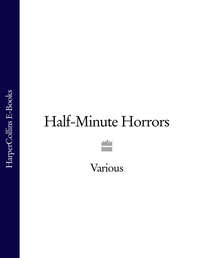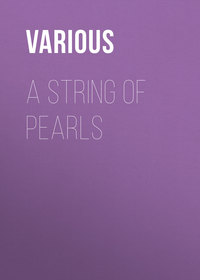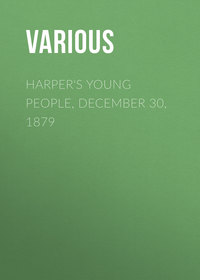
Bohemia under Hapsburg Misrule
4. The Slovenes. Occupy the whole of Carniola, the southern part of Styria, the major section of Goritz and Gradiska, except a section in the southwestern part thereof, the outlying villages of Trieste, the northern end of Istria, which projects on the west into Italian territory and eastward into Hungary. Niederle’s estimate of the Slovenes in 1900 was 1,500,000.
5. No Slavic race is more torn up territorially than the Serbo-Croatians. Although really one people by language and origin, they have divided themselves, or rather were subdivided by their political masters, into two national units. Their homelands include a large section of Istria and Dalmatia, together with the adjacent islands in the Adriatic, the whole of Croatia and Slavonia, a piece of southern Hungary, and all of Bosnia and Herzegovina. Besides this, there is, of course, the Serbian Kingdom and Montenegro.
Niederle estimated the Serbo-Croatians in 1900 at 8,550,000.
6. The Ruthenes (Little Russians). Overflow the Russian boundaries to Galicia, being predominant in east Galicia, strong in western and northern Bukovina, numerous in several counties in Hungary.
Niederle computed the strength of the Ruthenes in Galicia, Hungary, and Bukovina in 1900 at 3,500,000.
By religious affiliations the Slavs are divided as follows: To the Catholic group belong almost wholly the Bohemians, Poles, Slovenes, Croatians, and Slovaks (of the last named about seven-tenths). Protestantism finds favor among the Slovaks (24 per cent.), Bohemians (2.44 per cent.), and Poles living in Silesia (1.81 per cent.). The Orthodox faith is professed by the Ruthenes in Galicia, Hungary, and Bukovina, and the Serbians. A fraction of the Russians in Galicia and Hungary adheres to the Uniate Church, and there are believers in Mohammedanism in Bosnia and Herzegovina.
The old-fashioned Austrian diplomacy knew well the value of the principle “divide and rule” and tried it on its Slavs with success. There was a time when Bohemians in Moravia were taught by Austrian officials to believe that they were Moravians, not Bohemians. The difference between Bohemian and Moravian is as great as the difference between Bronx English and Brooklyn English, yet this fact did not discourage the grammarians in Vienna from setting up boundaries where none existed. Croatia, as pointed out elsewhere, is peopled by a nation calling itself alternately Croatians and Serbs. Possessing a common past, the same racial traditions, and speaking one language, the Serbo-Croatians are clearly one nation, divided only by different faiths. The Croatians use the Latin letters and adhere, almost to a man, to the Catholic faith, while the Serbs employ the Cyrillic alphabet and belong to the Orthodox Church. The busy grammarians in Vienna and in Budapest did their utmost to keep the Serbo-Croatians apart, and even incited one against the other, by instilling the belief in them that two different religions really meant two different races. Galicia is inhabited by two distinct peoples, the Russians and the Poles. The name “Russian” sounded badly in Austria. It constantly reminded the Galician Russians that on the other side of the yellow-black boundary posts lived a great nation that spoke the same language and professed the same faith as they. Again the learned grammarians in Vienna went to work and by dint of hard study discovered that Austrian Russians were really not what they seemed to be and promptly they baptized them “Ruthenes.” The ruse, of course, was to veil the nearness of the relationship of the “Ruthenes” to the Russians in Russia proper. In the same manner and with the same object in view the Slovaks of Hungary are encouraged to believe that they are a separate race and not near relatives of the Bohemians.
17
For a student of Austrian conditions it is instructive to note how the war of the Balkan Allies against the Turk divided the sympathies of the people along racial lines. Save a fraction of the Poles in Galicia, the Slavs sided heartily and enthusiastically with the Allies. The Germans and the Magyars wished for the success of the Turks. When the Bulgars routed the Ottoman army at Kirk Killisé, the Vienna press ill-concealed its chagrin, while Slavic journals rejoiced as if it had been their own victory. Imagine the dismay of such a staunch champion of Austrian public opinion as the Vienna “Neue Freie Presse,” when the Serbs crushed the Turk at Kumanovo! For many reasons Serbia was for years looked upon as a kind of barometer of the hopes of the Austrian Slavs. A clever Bohemian journalist made the interesting prediction some time before the Balkan War that relief from Austrian thraldom may be looked for, not from Russia, as many dreamers believed, but from the small Slavic states in the Balkans. If these were victorious, prophesied this newspaper writer, the Slavs in the Hapsburg Monarchy were sure to gain morally from the victory. Official public opinion frowned on the war relief work among Austrian Slavs in aid of the Balkan Allies.
18
Francis L. Rieger (1818-1903), a lawyer, writer, economist, and statesman, was, despite his German name, an uncompromising patriot who had spent his whole life in the service of his nation. Modern Bohemia without Rieger is unthinkable. His name is written large on every page of his country’s history. As a leader of the Old Bohemian party he naturally played a prominent rôle in the fight for the historical rehabilitation of the Bohemian Kingdom. Having married the daughter of Francis Palacký, the “Father of the Nation,” he was nicknamed by his political adversaries, “Son-in-law of the Nation.”
19
Ferdinand, however, took his oath of office January 30, 1527.
20
“The Slovaks and Their Language” (Slováci a ich Reč), by Dr. Samo Czambel, Budapest, 1903.
21
Among the Slovak spokesmen at this meeting was Editor Milan Getting, of New York. At a subsequent conference was present Albert Mamatey, President of the National Slovak Society.
22
The very words “Slovak,” “Slovakland,” “Slovak nation” are tabooed in Hungary, and school books containing them prohibited. Hungarian officialdom refers to Slovakland as the Hungarian Highlands.
23
London Times, January 20, 1915.
24
The writer is a representative type of the sturdy settler of Bohemian ancestry who helped to build up the Northwest. He sojourned in the birthland of his parents when the war broke out.
25
Professor Miller has traveled in Bohemia and is gathering material on the history of that country.
26
Professor Monroe has made numerous pilgrimages to Bohemia and his knowledge of Bohemians is intimate and thorough. He is a “Bohemian by adoption.”
27
The story is too long to be told in this connection; and the interested reader is referred to “History of Bohemian Literature,” by Count Lützow (London and New York, 1899), and “Bohemia and the Čechs,” by Will S. Monroe (Boston and London, 1910).
28
Professor Wiener is a distinguished Slavic scholar whose latest work, “An Interpretation of the Russian People,” has just been published.
29
Author of “Our Slavic Fellow-Citizens.” Miss Balch studied the Slav in the United States and “at the source,” in Europe.









